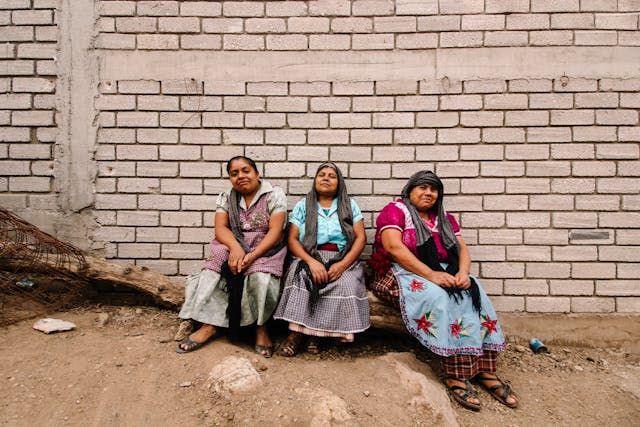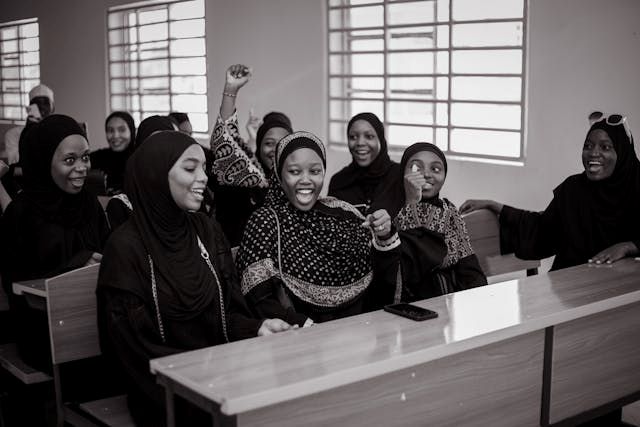Somewhere in the quiet corners of India's heartland, there’s a girl who wakes before dawn. She fetches water, helps her mother cook, feeds her siblings, and tends to cattle. She does all this before other children even wake up. Her school uniform hangs untouched. Her books gather dust. And her dreams now lie buried under expectation, tradition, and silence.
This is not an exception. This is the reality of millions of rural women in India whose access to education is systematically denied. As this complex crisis unfolds, it remains largely unseen by the urban gaze.
More Than Numbers
According to Census 2011, the literacy rate among rural women in India is just 58.75%, while their urban counterparts stand at 72.9%. In contrast, literacy among rural men is 70.7% and urban men, 86.3%. These are more than just numbers, they represent gaps in opportunity, agency, and voice.
But even the term "literacy" is misleading. It reduces education to the ability to read or write a sentence. It overlooks the access to secondary education, vocational training, digital literacy, or the freedom to apply knowledge in decision-making. For many rural women, even “being literate” doesn’t translate into empowerment.
The Myth of Progress
India’s policymakers often cite rising female school enrollments as evidence of success. On paper, yes enrollments have increased. Midday meal schemes, free uniforms, and campaigns like Beti Bachao, Beti Padhao have helped. But scratch the surface, and you'll find a deeper problem: most girls either don’t complete their schooling or receive an education so compromised that it barely equips them for life.
Why is that? Because rural education systems are often plagued by:
Poor infrastructure (no toilets, no electricity, no safe classrooms)
Teacher absenteeism
Gender-insensitive curricula
Unsafe travel routes
Deep-rooted social resistance to female mobility
In many cases, school becomes less about learning and more about attendance for the sake of statistics.

Barriers: What Really Blocks Them?
When we talk about educational barriers for rural women, we often imagine poverty as the primary obstacle. But the truth is layered, and poverty is just one thread in a tightly-woven net of socio-cultural constraints.
1. Gender Roles Start Early
From a young age, rural girls are socialized to serve others. Cooking, cleaning, and caregiving are not just chores, they’re identities. Something that is just “expected” out of women no matter what. School becomes secondary to household needs. A girl missing school to take care of a younger sibling is common, not controversial.
2. Marriage as a “Deadline”
For many families, educating a girl is racing against a clock. The age of marriage is still shockingly low in rural India, and puberty becomes a tipping point. After that, education is often seen as a “waste” of resources, especially if it doesn't directly improve marriage prospects.
3. Fear and Safety
One of the most unspoken barriers is safety. Parents fear letting their daughters walk miles to a distant school, often on isolated or poorly lit roads. Reports of harassment or violence, even if rare, ripple through communities and solidify a culture of protective restriction.
4. Caste and Class Complications
Not all rural women experience these challenges the same way. A Dalit girl from a poor family may face discrimination within schools, both from peers and teachers. A tribal girl may not even speak the language her textbooks are printed in. These intersections of caste, class, and geography further limit access.
Policies Aren’t Enough
Since Independence, India has launched numerous policies focused on women’s education. From constitutional mandates to programs under the Sarva Shiksha Abhiyan, there’s been no shortage of intent. But intent without implementation is just noise.
The National Policy on Education (1986) and its follow-up Action Plan (1992) acknowledged that empowering women requires their full participation in education. Yet, even with international pressure from the United Nations and persistent efforts by feminist movements, the progress is uneven.
Why? Because structural inequality cannot be solved by schemes alone. It needs systemic rethinking and listening to the women themselves.

Education vs. Empowerment: There’s a Gap
Simply getting rural women into schools does not guarantee empowerment. Real education is not just about syllabi and exams. It’s actually about confidence, critical thinking, and the ability to make informed choices.
Researcher Naila Kabeer rightly argued that education is a catalyst for empowerment only when it helps women access real opportunities. Otherwise, it’s just a tool that reinforces the same old hierarchy-educated women still expected to remain silent, submissive, and bound to traditional roles.
Punjab: A Case in Point
Let’s zoom in on Punjab, a state known for its agricultural wealth. Despite high per capita income, it ranks 14th in Human Development but 19th in Gender Development. Why the disconnect?
The rural female literacy rate here is just 58.9%, and the child *** ratio is a dismal 846 girls per 1000 boys. That means many girls are not even being born, let alone being educated!
In districts like Mansa and Sangrur, women’s education is often limited to basic schooling. Higher education is rare, and women’s roles remain largely tied to agriculture or domestic labor. The development boom has largely ignored gender parity in education.
The Psychological Weight of Exclusion
Perhaps the most devastating impact of these barriers isn’t visible on paper,it’s internalized in the minds of rural women. Years of being told they are less capable, less important, less deserving creates a psychological ceiling. Even when opportunities arise, many hesitate to take them.
Self-doubt, shame, and silence are powerful deterrents. Education, in its truest form, should dismantle those. Yet too often, it reinforces them.
So, What Needs to Change?
We cannot solve rural women’s educational crisis with Band-Aid policies. We need a shift in how we define and deliver education:
Community-led awareness campaigns to reframe the value of educating girls.
Safe, local schooling infrastructure that acknowledges the realities of rural mobility.
Curriculum reform that’s context-sensitive and skill-based.
Support systems for dropouts, especially mothers or married women who wish to re-enter education.
Incentives for families, but tied to measurable learning outcomes, not just enrollment.
Above all, we must listen to rural women. Ask them what education means to them, what they need, and what holds them back. Solutions imposed from above rarely work without voices from the ground.
Conclusion:
The barriers to rural women’s education in India are not hidden because they’re invisible. They’re hidden because we choose not to see them.
It’s time we do.
Because every time a rural girl is kept from learning, we don’t just fail her. We fail generations. We lose potential teachers, doctors, scientists, artists, and leaders. And we allow silence to win over voice.
The path to a more equitable India begins not just with policies but with a promise: that no girl, regardless of where she is born, will be denied her right to learn, grow, and lead.